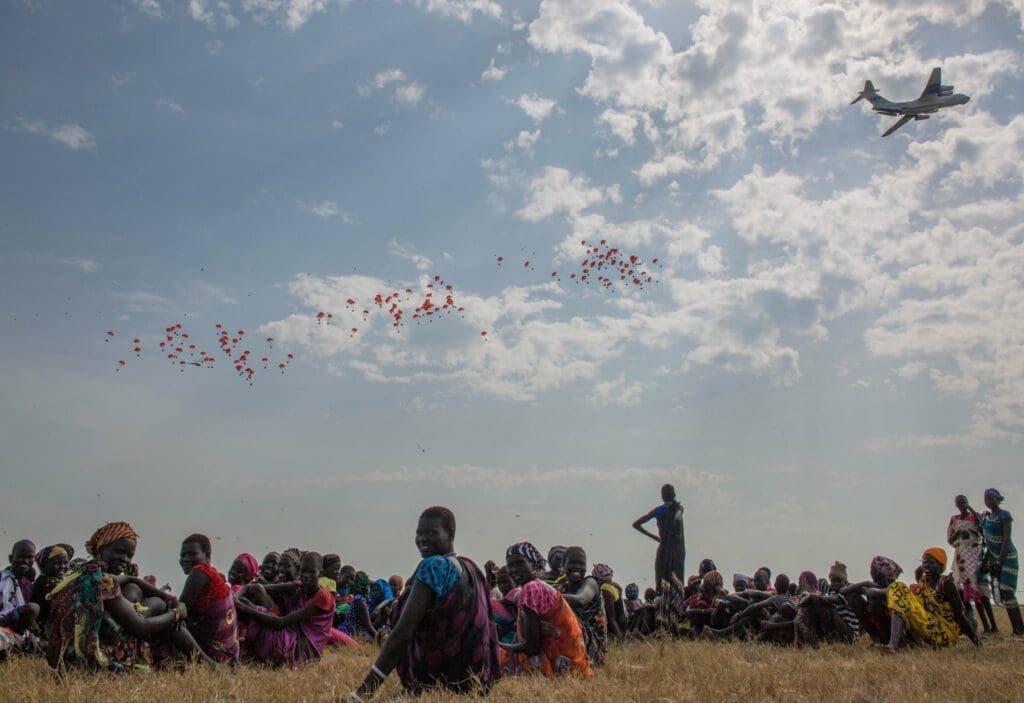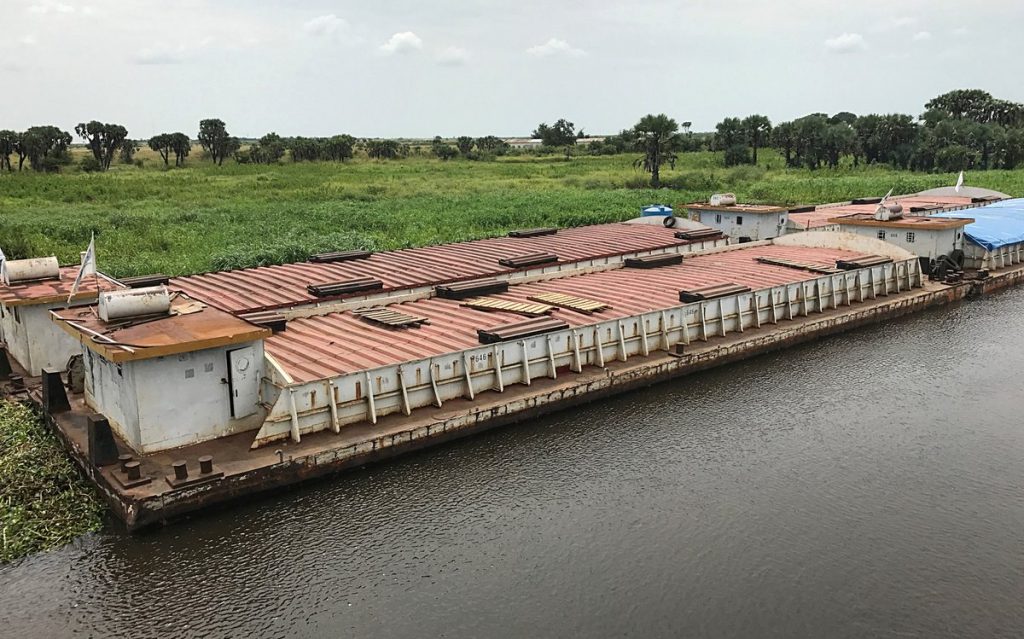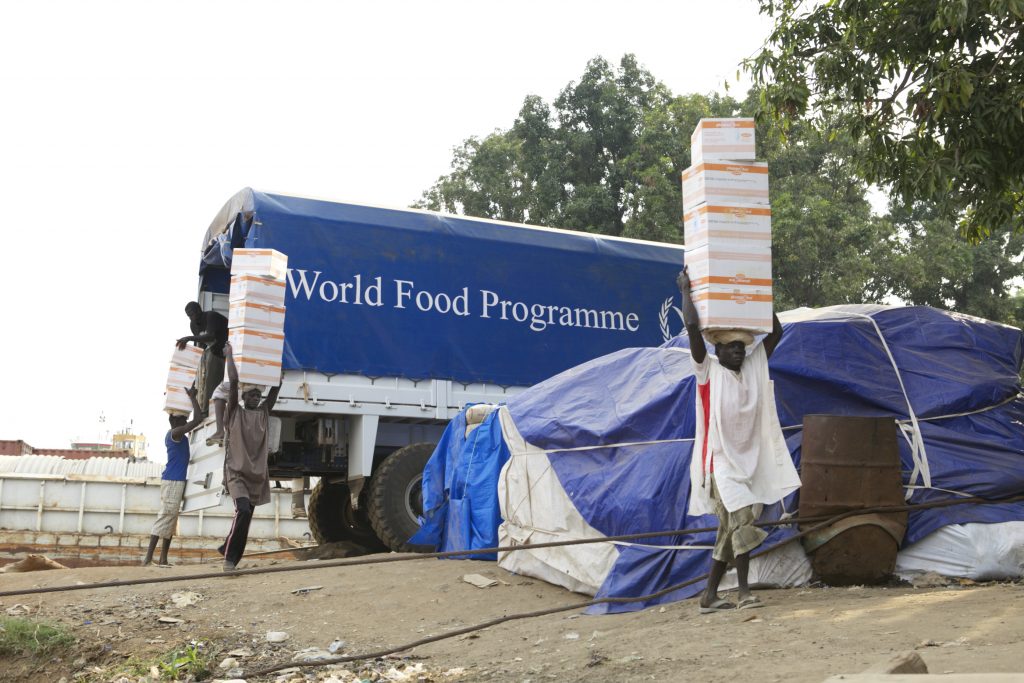By Any Means Necessary: How WFP Is Preventing Famine in South Sudan

239 days.
That’s how long the World Food Programme (WFP) has fought back famine — an unspeakable humanitarian crisis — in South Sudan.
For 239 days, WFP has employed every means of food delivery available, from airdrops and barges up the Nile to convoys of trucks, all transporting lifesaving food. It takes the support of people like you to fill these vehicles to capacity so the most vulnerable families have what they need to survive.
See the latest updates on the situation in South Sudan.
Here’s how WFP is delivering food in hard-to-reach areas of South Sudan:

Stefanie Glinski. Hundreds of displaced families in Ganyiel, South Sudan await a lifesaving airdrop of food from WFP.
Delivering Food with Airdrops
Airdrops are a critical lifeline for families trapped in dangerous and inaccessible areas of South Sudan. These are places cut off from the world by conflict or by flooding that makes roads impassable.
Each airdrop delivers food for 2,000 people who don’t know when they’ll have their next meal without these lifesaving deliveries. WFP does an average of eight airdrops a day in South Sudan — delivering food and hope to 16,000 people. WFP does whatever it takes to reach hungry families. No other agency has the same ability and logistical operation to meet this challenge. In just hours, WFP can rush emergency food supplies to even the most remote location.

WFP/South Sudan. A barge carrying 2,250 metric tons of mixed commodities arrives in Malakal, South Sudan.
Distributing Food with Barges
The Nile gives WFP access to people in remote areas of South Sudan that can’t be reached by road because of the brutal conflict, poor road infrastructure and the country’s annual rainy season, which causes widespread flooding.
As you’re reading this message, for the first time in four years WFP is loading a river barge that will deliver 551 tons of food to the town of Malakal, where hunger has reached emergency levels and people desperately need food assistance.

WFP/Ahnna Gudmunds. Volunteers unload WFP humanitarian supplies in Juba, South Sudan.
Transporting Food on Truck Convoys
There are few paved roads in South Sudan outside South Sudan’s capital of Juba, but that doesn’t stop WFP’s truck convoys from reaching hungry families in need. Trucks carrying more than 1 million pounds of lifesaving food are now in transit from WFP warehouses in Uganda, Kenya, Ethiopia and Sudan. These trucks are carrying large bags of food, boxes of nutritional supplements and other humanitarian supplies.
This is how support from people like you has helped WFP keep famine at bay.
Yet 239 days later, more than 5 million people are still suffering from severe hunger in South Sudan and more than 1.1 million children are malnourished.
A poor harvest this year means the lean season is expected to start earlier than usual, leaving people with even less access to food. Families that have somehow survived the horrific violence of South Sudan’s civil war shouldn’t die of hunger.
That’s why WFP is committed to doing whatever it takes to reach families in the most dangerous parts of South Sudan with lifesaving food — by any means necessary.
Learn more about how WFP is preventing famine around the world.




